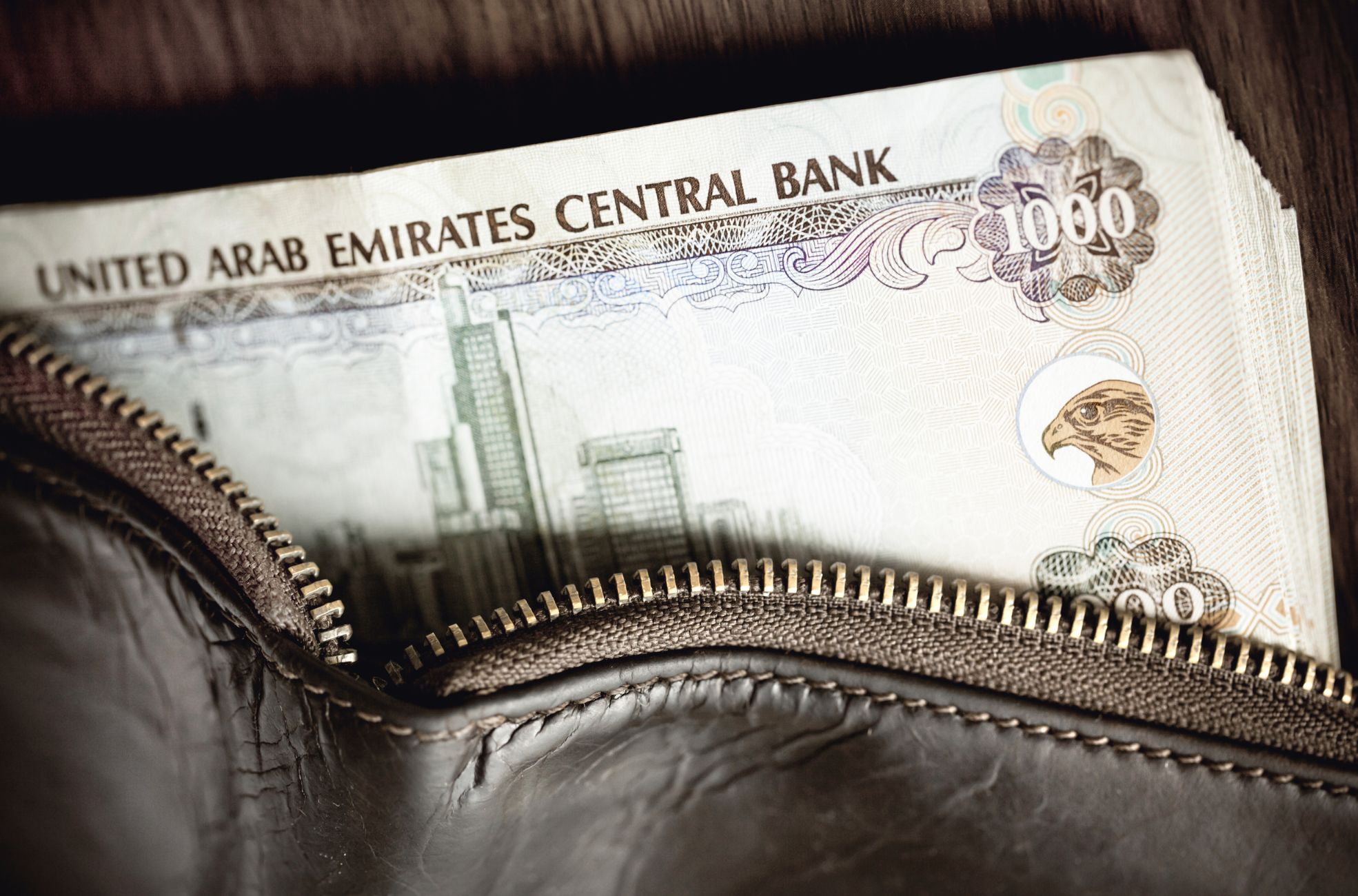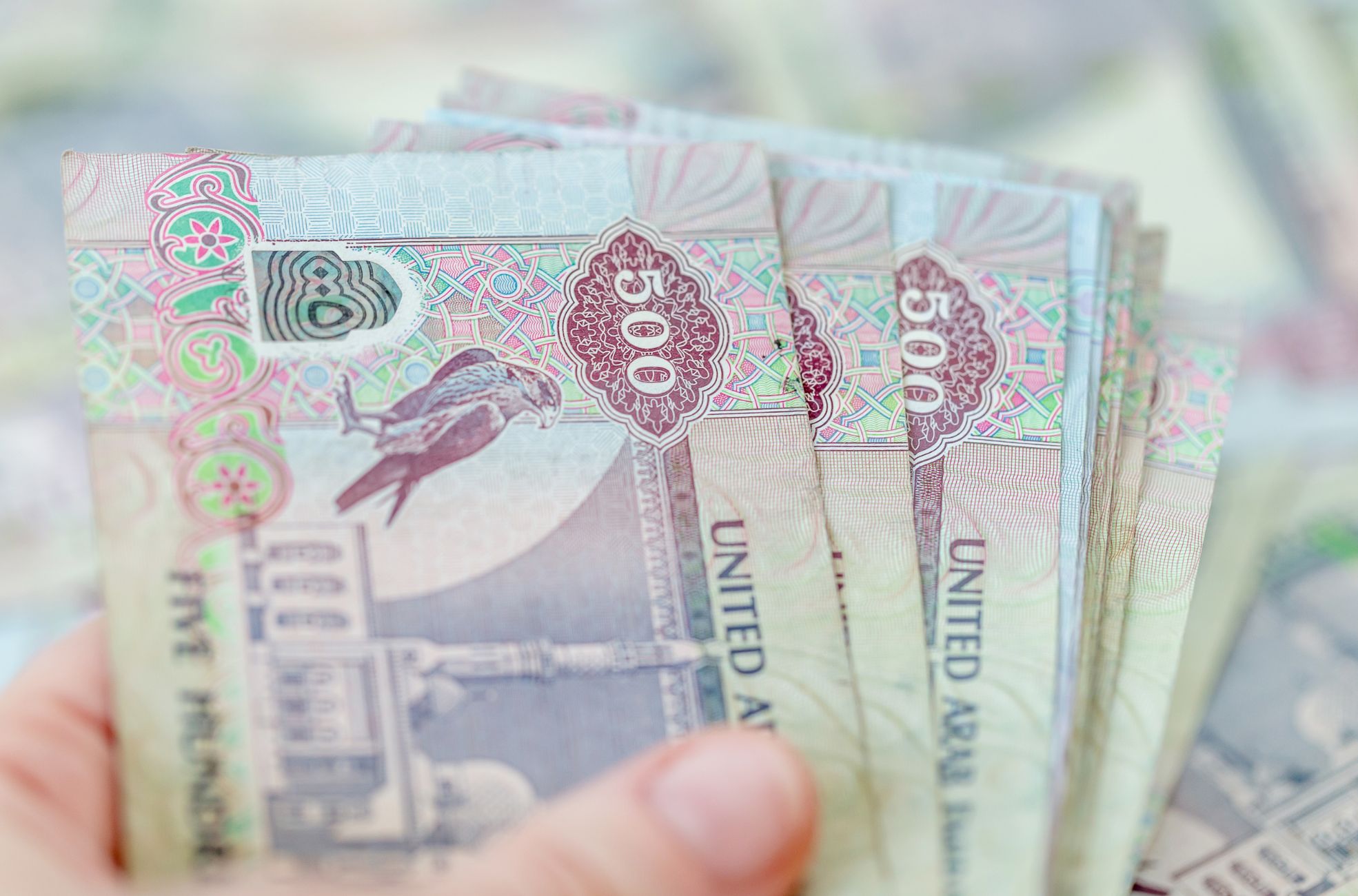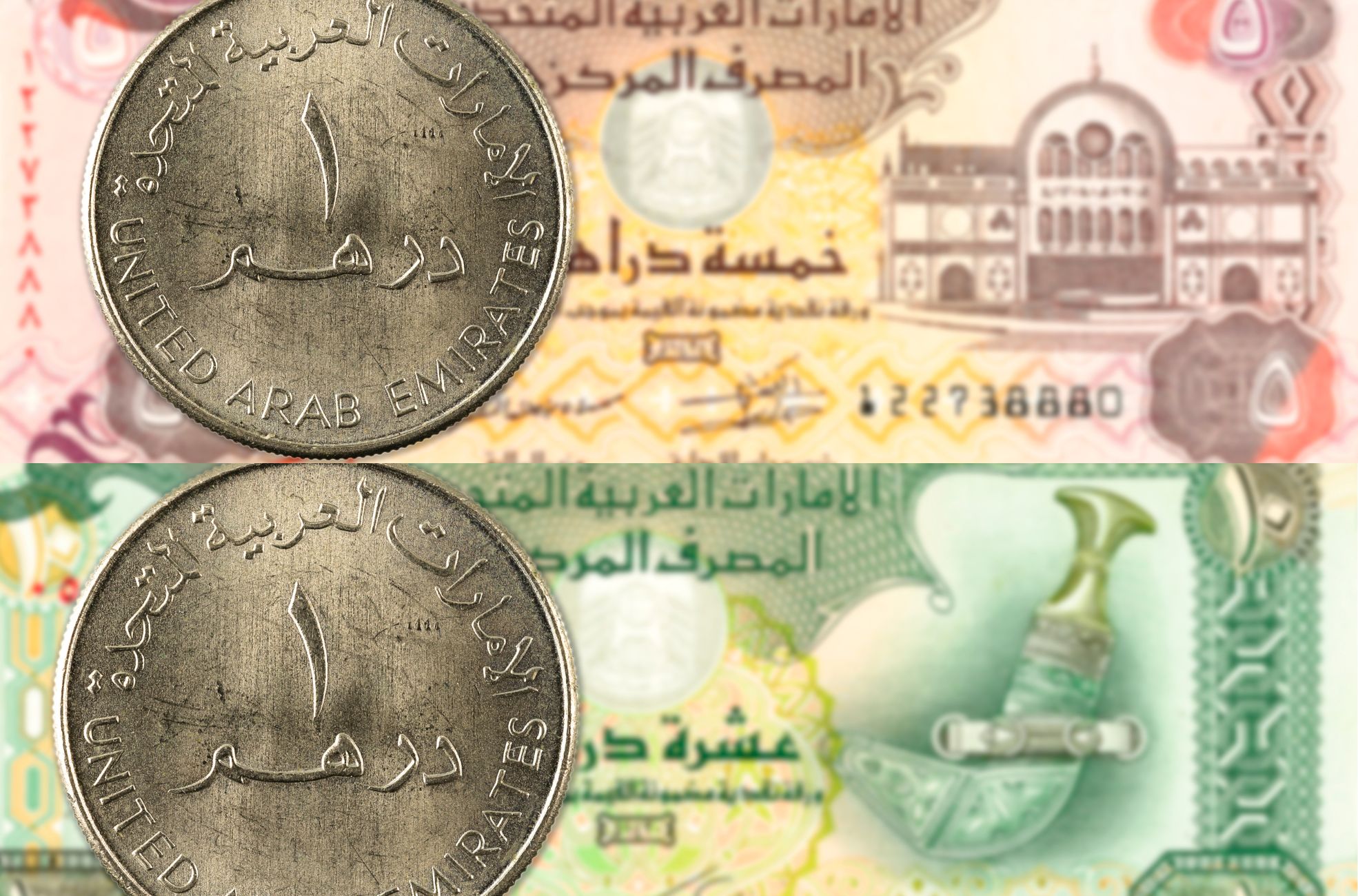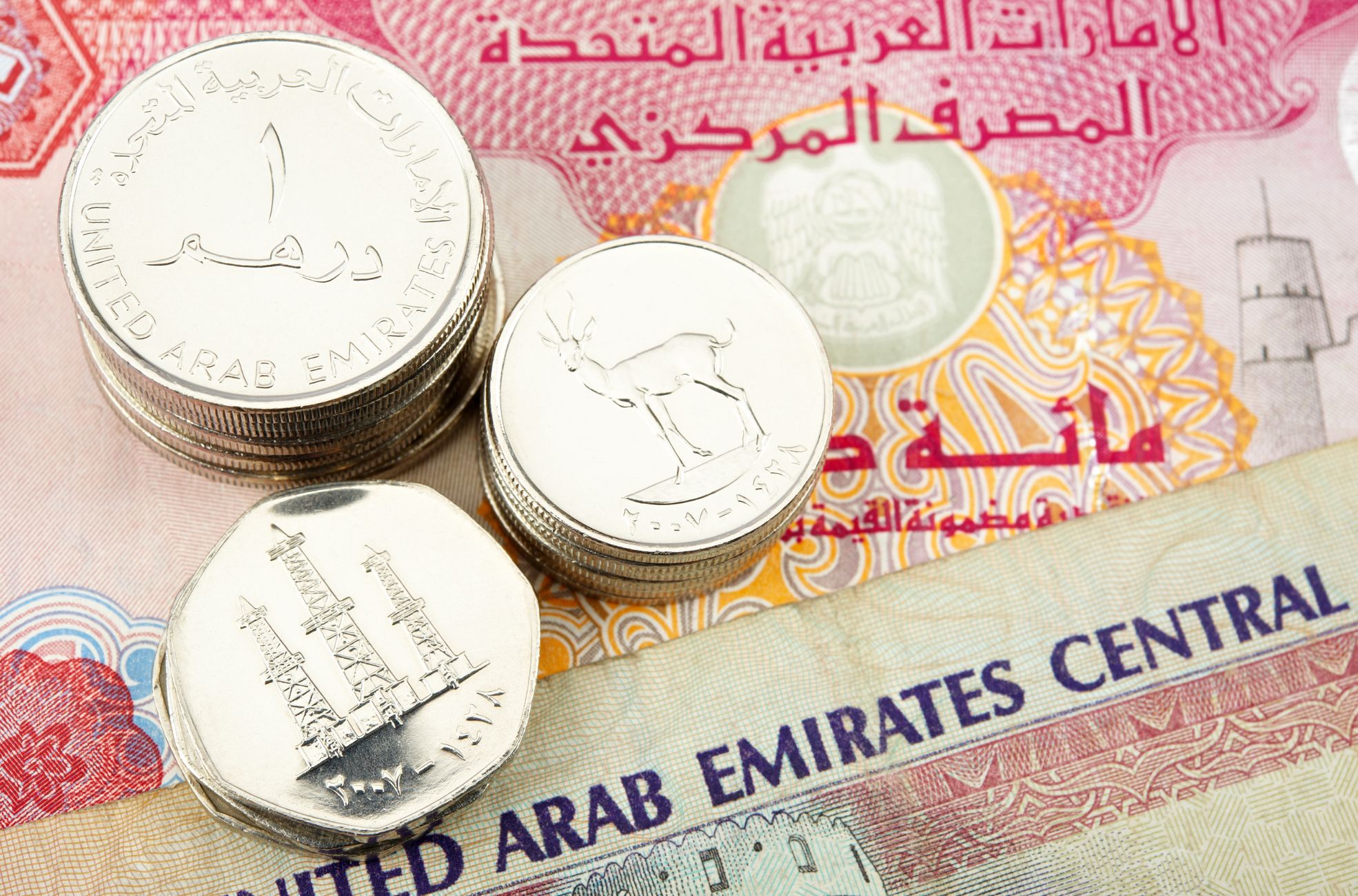The UAE currency symbols, comprising the dirham and fils, represent a deep-rooted heritage and the United Arab Emirates’ economic evolution. These symbols, found in various denominations of currency, are integral to the nation’s identity and are used in everyday transactions by residents and visitors alike. The dirham, denoted by the symbols د.إ, Dh, or Dhs, has a historical lineage tracing back to ancient trade systems, reflecting the UAE’s longstanding position as a commercial hub.
This introduction explores the rich tapestry woven into the UAE’s monetary system, highlighting the unique symbols and designs that narrate the Emirates’ storied past, cultural significance, and vision for the future. As we delve into the details of the UAE’s currency, we uncover the values and aspirations of a nation reflected in the coins and banknotes that circulate within its economy.
Overview of the UAE Monetary System
The United Arab Emirates (UAE) boasts a rich history reflected in its currency, the UAE dirham (AED), which is the nation’s official monetary unit. The 1 dirham coin is often symbolised as د.إ, Dh, or Dhs. It’s subdivided into 100 smaller units known as fils.
The term ‘dirham’ comes from the Greek word ‘drachmae’, meaning ‘handful’. Passed down through Latin, this historical connection highlights the region’s long trade and currency exchange tradition.
Historical Perspective of the UAE Dirham
Before the UAE dirham came into play, the region’s various emirates used the Gulf rupee, which was pegged to the Indian rupee. This changed in 1966 when India devalued the Gulf rupee, prompting the emirates to seek a new currency.
While most emirates adopted the Qatar and Dubai riyal, Abu Dhabi went for the Bahraini dinar. The need for seven emirates and a unified currency became clear. So, on 19 May 1973, the UAE dirham was introduced, marking a significant step in the nation’s economic independence.
The adoption of the dirham was only immediate across some emirates. For instance, Ras Al Khaimah switched from the Bahraini dinar to the dirham at a rate of 1 dinar to 10 dirhams. Initially, the new currency was available in both coins and notes.
Coins were introduced in denominations that mirrored those of the Qatar and Dubai dirham coins. Over the years, the UAE has issued commemorative coins to celebrate significant events and rulers, adding to the rich tapestry of the UAE’s monetary history.
The Role of the Central Bank in Currency Design
The Central Bank of the UAE, established by Union Law No (10) of 1980, plays a crucial role in the design and management of the national currency. It took over from the UAE Currency Board, which was responsible for issuing the new independent currency. The Central Bank’s responsibilities extend to monetary policy, banking regulation, and currency design.
Coins in the UAE are minted in denominations of 1, 5, 10, 25, 50 fils, and 1 dirham. The smaller denominations are struck in bronze, while the larger ones are made of cupro-nickel. The 50 fils dirham coin is uniquely curve-equilateral-heptagonal in shape.
Because of their low value and infrequent use, the 1, 5, and 10 fils coins are rarely seen in everyday transactions. This leads to the rounding of amounts to the nearest 25 fils. The 1 fils coin is particularly rare and only circulates a little.
Banknotes are issued in three denominations, from Dhs 5 to Dhs 1,000. The front of these notes features Arabic text with Eastern Arabic numerals. At the same time, the reverse side is printed in English with Arabic numerals.
A falcon watermark is a consistent security feature across all denominations to deter counterfeiting. The Central Bank has introduced polymer notes, starting with a Dhs 50 note in 2021 to celebrate the UAE’s golden jubilee. This was followed by Dhs 5 and Dhs 10 notes in 2022 and a Dhs 1,000 note in the first half of 2023.
The dirham’s value has been pegged to the US dollar since November 1997. This peg ensures stability and predictability in international trade. The fixed exchange rate, currently at US$1 = Dhs 3.6725, shows the UAE’s commitment to maintaining a strong and stable currency in the global market.

The Symbols On UAE Bank Notes
Dhs 5 – Salem Al Mutawa (English side)
The five dirham note features Salem Al Mutawa on its English side, a figure whose legacy is intertwined with the nation’s heritage. His presence on the currency signifies his importance to the UAE’s historical narrative.
Dhs 5 – the Blue Souq (Arabic side)
The Blue Souq, a significant landmark in Sharjah, graces the Arabic side of the five dirham note. This marketplace, with its distinctive blue tiles and wind towers, is a modern representation of a traditional bazaar and symbolises Sharjah’s cultural and economic dynamism.
Dhs 10 – Date tree (English side)
The ten dirham note displays the date tree, a symbol of life and prosperity in the desert. Its depiction on the currency celebrates the tree’s role in sustaining life and its cultural significance in the region.
Dhs 10 – a Curved Dagger Khanjar (Arabic side)
A khanjar, the traditional Omani dagger, adorns the Arabic side of the ten dirham note. This emblem of Arab heritage, with its unique curved blade, signifies masculinity and social status within the culture.
Dhs 20 – Dhow Boat on the Sea (English side)
The twenty dirham note pays homage to the UAE’s seafaring traditions with a dhow boat illustration. These vessels were instrumental in establishing trade routes and are a nod to the nation’s maritime history.
Dhs 20 – Dubai Creek Golf and Yacht Club (Arabic side)
The Dubai Creek Golf and Yacht Club, with its design inspired by the sails of a dhow, is featured on the Arabic side of the twenty dirham note. It represents Dubai’s blend of tradition and modern luxury.
Dhs 50 – Al Fahidi Fort (English side)
Al Fahidi Fort, a unique symbol of Dubai’s historical narrative, is depicted on the fifty dirham note’s English side. This fortress is a reminder of the emirate’s pre-oil era.
Dhs 50 – An Oryx (Arabic side)
The oryx, an indigenous antelope, is the national animal illustrated on the Arabic side of the fifty dirham note. Its image emphasises the UAE’s dedication to conserving its wildlife and natural environment.
Dhs 100 – World Trade Centre (English side)
The World Trade Centre, a symbol of Dubai’s international commerce, is featured on the one hundred dirham note’s English side, highlighting the emirate’s global business prominence.
Dhs 100 – Sheikh Zayed Bridge, Abu Dhabi (English side)
The Sheikh Zayed Bridge, an architectural wonder in Abu Dhabi, is also portrayed on the English side of the one hundred dirham note. It symbolises the nation’s focus on infrastructure and its role in connecting people and markets.
Dhs 200 – The Central Bank of the UAE (English side)
The two hundred dirham note bears an image of the Central Bank on its English side, acknowledging its pivotal role in the nation’s financial landscape.
Dhs 200 – The National Stadium, Zayed Sports City, Abu Dhabi (Arabic side)
The National Stadium at Zayed Sports City is featured on the Arabic side of the two hundred dirham note. It represents the UAE’s commitment to sports and the development of top-tier athletic facilities.
Dhs 500 – Falcon
The falcon, a revered bird in Emirati culture, is showcased on the five hundred dirham note. This bird is a symbol of the traditional practice of falconry and the connection between the people and the natural world.
Dhs 1000 – The UAE Skyscrapers (English side)
The one thousand dirham note’s English side displays the UAE’s skyscrapers, signifying the nation’s urban growth and its iconic cityscapes.
Dhs 1000 – Qasr Al Hosn (Arabic side)
Qasr Al Hosn, Abu Dhabi’s oldest stone building, is featured on the Arabic side of the one thousand dirham note. This fort represents the emirate’s transformation from a modest fishing community to a vibrant metropolis.

UAE Coins and Their Symbols
25 Fils – an Arabian Sand Gazelle
The 25 Fils coin is imprinted with the Arabian Sand Gazelle, a species indigenous to the deserts of Abu Dhabi. This animal is a significant component of the UAE’s fauna and symbolises the nation’s commitment to preserving its natural environment.
On the reverse, the denomination is inscribed in Arabic, along with the country’s name in both English and Arabic, a common feature on all denominations. The design also incorporates the gazelle positioned to the right, with the date displayed in both the Gregorian and Islamic Hijri calendars, underscoring the UAE’s dedication to safeguarding this species, which has benefited from local conservation programs.
50 Fils – Three Standing Oil Derricks
The 50 Fils coin honours the UAE’s transformation through its depiction of three oil derricks, representing oil’s pivotal role in the nation’s economic ascent. The oil sector’s inception in the 1950s and the subsequent exportation of oil from Abu Dhabi in 1962 marked a turning point in the UAE’s financial history. The coin’s evolution from a circular to a heptagonal shape in 1995 reflects the ongoing significance of the oil industry.
AED 1 – a Local Tea Pot (Dallah)
The AED 1 coin features a Dallah, the traditional Arabic coffee pot, symbolising the Emirati culture of hospitality. Coffee, or Qahwa, is a central element of social gatherings, often served with dates.
The Dallah depicted on the coin invites visitors to experience the warmth of Emirati hospitality. The coin’s reverse side also bears the country’s name in both English and Arabic.
In 1995, the AED 1 coin was resized, though the older, larger versions are still occasionally found. Collectors may also find interest in the limited edition commemorative AED 1 coins released since the 1980s to mark various national celebrations and milestones, such as the Dubai Chess Olympiad and the Year of Zayed, adding to the cultural narrative of the UAE’s currency.

FAQs
What are the different types of dirhams?
The UAE’s currency is available in both banknotes and coins. The Central Bank of the UAE is tasked with the issuance of these forms of money, including special edition coins that commemorate important national events and figures.
Is it DHS or AED?
While AED is the official abbreviation, the currency is also commonly referred to as Dhs or DH in daily commerce and conversation throughout the country.
What’s Dubai money called?
The currency used in Dubai is the same as that of the entire UAE, known as the Emirati Dirham.
Is AED a strong currency?
The AED is recognised for its exchange rate stability due to its peg to the US dollar. This fixed rate has been instrumental in stabilising the nation’s export prices. The UAE’s substantial economic performance, with a GDP of approximately $421 billion in 2019, underpins the dirham’s resilience. While there have been debates about the implications of detaching the AED from the dollar, the currency continues to benefit from the economic prosperity and stability of the UAE.
Understanding the UAE Dirham
The symbol for the dirham is “د.إ, ” an abbreviation in Arabic script, reflecting the nation’s official language and script.
The Symbolism in UAE Currency
On the 20 dirham note, the Dhow, a traditional sailing vessel, is depicted, underscoring the UAE’s maritime heritage. The 100 dirham note showcases the falcon, symbolising the nation’s valour and cultural significance.
These elements, coupled with Arabic calligraphy, are a testament to the region’s artistic legacy and serve as a constant embodiment of national pride.
Security Features and Regional Importance
To safeguard its currency, the Central Bank has implemented advanced security measures in its banknotes, such as watermarks, security threads, and optically variable ink, to thwart forgery and bolster confidence in the currency.
The dirham is not only pivotal to the UAE’s economy but also plays a crucial role in the financial landscape of the Gulf Cooperation Council (GCC) region, underpinning regional commerce and finance. The currency’s designs are a testament to the UAE’s allegiance to fiscal stability and its storied past.
Embracing the Dirham’s Legacy
The UAE dirham is more than just a means of the transaction; it is a canvas that narrates the UAE’s journey from its traditional roots to its modern-day splendour. Each symbol woven into its fabric echoes the nation’s pride, traditions, and ambitions. Whether it’s the intricate artwork on a banknote or the cultural emblems on coins, the UAE currency is a tribute to the country’s past, present, and future.
Handling the dirheem is an everyday experience steeped in significance for visitors and residents alike. As you use this currency in bustling souks, gleaming skyscrapers, or while enjoying a cup of aromatic qahwa, remember that every dirham in your pocket tells a story of a land where heritage meets the horizon.









